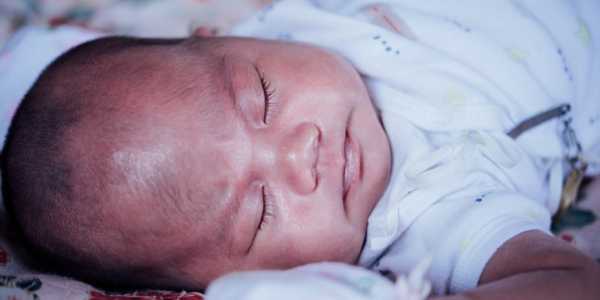Sudden Infant Death Syndrome (SIDS) is a tragic and distressing occurrence that affects families worldwide. It refers to the sudden and unexplained death of an otherwise healthy infant, typically during sleep. While the exact cause of SIDS remains unclear, research has identified several risk factors and preventive measures that can help reduce the likelihood of such incidents. This article discusses practical steps parents can take to create a safe environment for their infants, focusing on sleep practices, health considerations, and supportive measures.
The first step in reducing the risk of SIDS is to create a safe sleep environment for your baby. Ensuring that your baby’s sleeping space is free of hazards can significantly lower the risks. Here are some key guidelines to follow:
A firm, flat mattress is essential for safe sleep. Soft mattresses or surfaces can increase the risk of suffocation since a baby’s face can sink into them. Avoid placing pillows, comforters, or soft toys in the crib, as they can block the baby’s breathing if the baby rolls into them. Stick to a fitted sheet that fits securely over the mattress to ensure your baby stays safe during sleep.
Use a crib, bassinet, or play yard that meets the latest safety standards. Check that the crib's slats are spaced no more than 2-3 inches apart to prevent the baby from slipping. Car seats, swings, or other sitting devices should not be used for long periods of sleep, as they are not designed for safe, flat sleep. Babies are safest on their backs on a firm, approved sleeping surface.

Keeping your baby away from smoke is crucial. Exposure to secondhand smoke, both during pregnancy and after birth, raises the risk of SIDS and other breathing problems. Make sure your home, car, and any other spaces where your baby spends time are completely smoke-free. Encourage visitors and caregivers to avoid smoking near your baby to create a safer environment.
Ensure that the crib or bassinet remains clear of extra items. Avoid putting stuffed animals, loose blankets, or other soft objects in the sleep space, as they can pose suffocation risks. A simple, clutter-free sleep environment promotes better airflow and makes it safer for your baby to sleep soundly.

How an infant is positioned during sleep significantly impacts the risk of SIDS. Adhering to safe sleeping practices is essential for promoting a healthy sleep routine. Here are some important guidelines:
The most critical recommendation for preventing SIDS is always to place babies on their backs to sleep. This sleeping position has been proven to reduce the risk of SIDS. If infants are placed on their stomachs or sides, they may have an increased likelihood of rebreathing carbon dioxide, which can be dangerous.
While back sleeping is crucial for safe sleep, it is also important to provide infants with supervised tummy time while they are awake. Tummy time helps strengthen their neck and shoulder muscles, promoting healthy development. Always supervise infants during tummy time to ensure their safety.
Instead of using loose blankets, consider swaddling infants or using sleep sacks designed for safe sleeping. These garments keep babies warm without the risks associated with loose bedding. Make sure that any swaddle or sleep sack allows for free movement of the legs and hips to avoid hip dysplasia.

Maintaining a comfortable temperature and reducing exposure to harmful substances are key steps in keeping your baby safe. Here are some practical strategies for parents to follow:
Keeping the infant’s sleeping area at a comfortable temperature is vital. Aim for a room temperature between 68°F and 72°F (20°C to 22°C). Overheating can increase the risk of SIDS, so avoid overdressing the baby for sleep. Dress them in light clothing and use a sleep sack if necessary.
When putting your baby to sleep, ensure their head stays uncovered to prevent overheating. Avoid hats or head coverings during sleep, as these can trap heat. A baby’s body releases heat through the head, so leaving it uncovered helps maintain a comfortable temperature. A well-ventilated room with good airflow also supports a safe and cool sleep environment.
As emphasized earlier, creating a smoke-free space is essential for your baby’s safety. Exposure to secondhand smoke increases the risk of SIDS and other respiratory problems. Make sure family members and visitors avoid smoking indoors or near your baby. If possible, designate smoke-free areas in your home and encourage all caregivers to follow this rule to protect your infant.

Breastfeeding and regular health check-ups contribute to an infant's overall health and well-being, indirectly reducing the risk of SIDS. Here’s how:
Breastfeeding has numerous health benefits for both infants and mothers. Research indicates that breastfeeding may lower the risk of SIDS. If possible, aim to exclusively breastfeed for the first six months, as this can provide essential nutrients and antibodies that enhance an infant's immune system.
Regular pediatric check-ups are essential for monitoring an infant's growth and development. During these visits, parents can discuss any concerns regarding sleep, feeding, or overall health. Pediatricians can offer personalized advice and support, ensuring that infants receive the best possible care.
Vaccinations play a crucial role in protecting infants from various diseases that could compromise their health. Staying up-to-date with the recommended vaccination schedule helps ensure that infants are protected against illnesses that may increase SIDS risk.

Reducing the risk of SIDS is a shared responsibility that involves creating a safe sleep environment, practicing safe sleeping positions, avoiding overheating and harmful exposures, and supporting the infant's health through breastfeeding and regular check-ups. By taking proactive measures, parents can significantly enhance their child's safety during sleep.
Staying informed and connected with healthcare professionals is essential for navigating the challenges of parenting. Ultimately, a combination of safe practices and awareness can help provide infants with the best possible start in life, fostering a secure and healthy future.